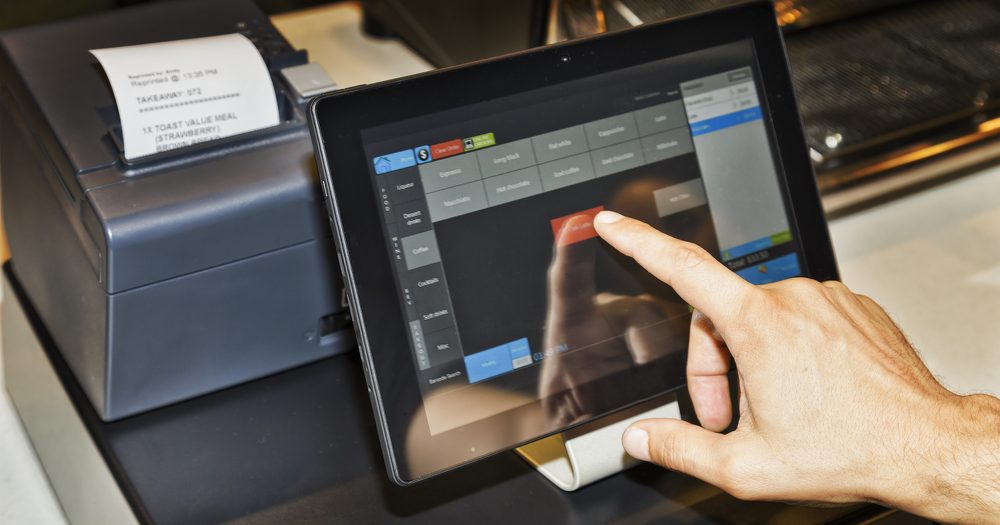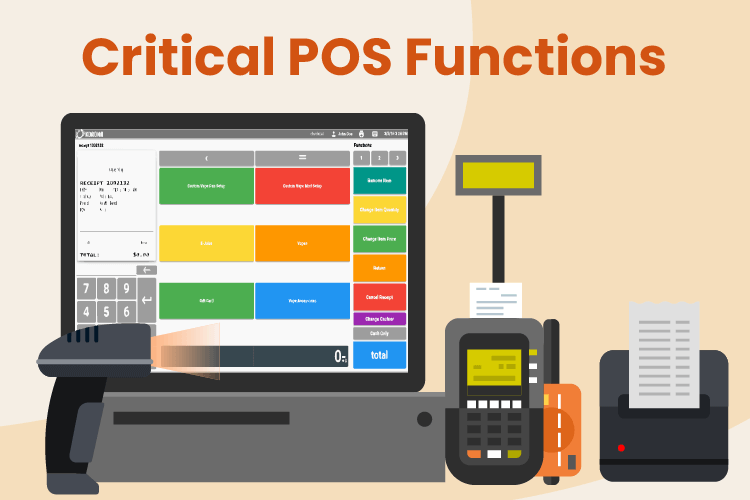POS Software : The Point-Of-Sale System Improves Checkout Processes Effectively
Unloading the Power Behind Point of Sale Systems
Have you ever paused to consider what occurs the moment you swipe your card or tap your phone at a checkout? That flash triggers a waterfall of processes, orchestrated by advanced Point of Sale Systems. Far from being simple sales register, these systems serve as the digital heartbeat of retail operations, weaving together sales information, stock, and consumer interaction.
Think of a busy café where the barista handles orders, payments, and commitment rewards simultaneously. The POS system isn't just a tool-- it's the hidden partner guaranteeing every coffee is represented, every discount used properly, and every client leaves pleased. POS. It's the distinction in between chaos and smooth service
Core Functions That Drive Effectiveness
- Sales Deal Management: Tracks each purchase with accuracy, ensuring precision in billing and receipts.
- Inventory Control: Instantly updates stock levels, signaling when it's time to reorder.
- Consumer Data Collection: Gathers insights for individualized marketing and commitment programs.
- Staff member Monitoring: Schedules shifts and records hours worked.
Why Does This Matter?
Think of the last time you waited in a long checkout line. Aggravating, ideal? A well-implemented POS system slashes wait times by improving payment procedures, minimizing human error, and syncing sales with backend operations in real-time. It's like having a conductor assisting every note in the symphony of retail.
| Function | Benefit | Impact |
|---|---|---|
| Real-Time Analytics | Instantaneous sales reporting | Better decision making |
| Mobile Compatibility | Checkout anywhere | Boosted client experience |
| Integrated Payments | Numerous payment choices | Increased sales opportunities |
Doesn't it make you wonder how businesses ever managed without these systems? In a world where every second counts, the POS is no longer just a convenience-- it's a requirement.
Decoding the Celestial Puzzle
When peering into the night sky, have you ever questioned how ancient mariners determined their place without modern-day innovation? Positional astronomy is the art and science behind that celestial navigation. Why does comprehending the exact position of stars and planets matter? Due to the fact that even a minute mistake can send you miles off course, especially when counting on the stars as your compass.
The Subtle Complexities of Coordinate Systems
One might think the sky is a simple canvas, but it's a vibrant sphere dotted with moving targets. The equatorial coordinate system. Point of Sale-- ideal ascension and declination-- mimics Earth's own location, however with a twist. The Earth's axis wobbles, a phenomenon referred to as precession, which subtly moves star positions over years. This demands continuous recalibration. Have you ever saw how Polaris doesn't constantly sit precisely at the North Celestial Pole? That's precession at work
Tips from the Observatory
- Utilize a high-precision chronometer to determine sidereal time precisely; even seconds matter.
- Calibrate your instruments regularly to represent climatic refraction, specifically near the horizon.
- Cross-check star catalogs-- different epochs can yield differing collaborates.
- Employ software application that elements in nutation and aberration for modern-day precision.
Remarkable Anecdote
Think about the tale of a 16th-century navigator who, using primary tools and naked-eye observations, computed his ship's position with unexpected precision. His secret? Proficiency of celestial mechanics and a deep understanding that the stars, though seemingly fixed, belong to a cosmic dance.
Accuracy Needs Persistence
Attempting to pinpoint a star without considering climatic distortion is like attempting to read a book through a frosted window. Even the very best telescopes can be tricked by the atmosphere's unpredictable layers. Persistence, numerous observations, and averaging outcomes typically reveal the true positional information. Isn't it fascinating how the sky's apparent stillness masks such elaborate shifts?

Decoding the Essence of Positive Operator-Valued Steps
Think of trying to catch a shadow's real shape in a world where light bends unpredictably. Positive Operator-Valued Steps (POVMs) perform a similar task in quantum mechanics-- determining states where classical intuition stops working. Unlike the cool sharpness of projective measurements, POVMs enable a richer tapestry of outcomes, weaving probabilities from operators that aren't necessarily orthogonal. Why go for the ordinary when you can paint with the complete scheme of quantum possibilities?
Quantum Measurement Beyond Traditional Boundaries
Standard measurements feel stiff, however POVMs offer flexibility. In practice, they emerge from coupling a system with an ancilla, then carrying out projective measurements on the combined system. This technique extends the horizon of what can be observed. Ever questioned how to enhance info extraction without troubling fragile quantum states? POVMs are the secret.
- Non-orthogonality: Unlike projectors, POVM components overlap, enabling nuanced detection methods.
- Efficiency: The sum of all POVM components equals the identity operator, guaranteeing overall likelihood.
- Physical Realizability: Any POVM can be implemented by means of Neumark's dilation theorem, linking abstract math to laboratory experiments.
Expert Tips for Browsing POVM Implementation
Handling POVMs in practice isn't trivial. Quantum sound and decoherence sneakily distort your ideal operators. To fight this:
- Design POVMs customized to your speculative setup-- personalization beats one-size-fits-all each time.
- Usage convex optimization algorithms to find the ideal POVM that makes the most of information gain for your quantum state discrimination job.
- Keep in mind, the subtle interaction between operator positivity and measurement efficiency governs the trade-off between precision and disruption.
Hidden Intricacies in POVM Applications
What does it imply when a POVM element is positive but not a projector? This subtlety often astonishes newcomers however exposes an extensive reality: quantum measurements do not need to be sharp to be helpful. In cryptographic protocols, for example, utilizing POVMs instead of projective measurements can improve security by extracting info more gently, leaving less traceable disruption.
| Feature | Projective Measurement | POVM |
|---|---|---|
| Operator Type | Orthogonal Projectors | Favorable Semidefinite Operators |
| Measurement Results | Fixed, sharp | Flexible, probabilistic |
| Execution | Direct on system | Needs secondary systems |
| Information Extraction | Often restricted | Optimizable and richer |
Understanding the Intricacies of Evidence of Stake
Imagine a world where blockchain validators don't race to fix puzzles but instead stake their assets, indicating trust and dedication. This is the essence of the Evidence of Stake (PoS) mechanism. Yet, below its elegant surface area lies a complicated dance of incentives and security measures. Why does staking more tokens increase your chance to validate the next block? Due to the fact that it lines up financial incentives, making efforts to defraud the network excessively pricey.
The Subtle Risks of Stake Centralization
One might ask: could a handful of stakeholders subdue a network? The concentration of staked tokens in couple of hands may alter the decentralization perfect, leading to oligarchic control over block creation. This isn't simply theoretical; it's a real stress in PoS systems. Efficient networks counteract this by carrying out systems such as:
- Slashing conditions that punish harmful stars by confiscating staked tokens
- Randomized validator selection to avoid predictability
- Delegated staking models permitting token holders to entrust others without giving up ownership
Specialist Pointer: Timing Your Stake
Skilled validators understand that timing can be everything. Joining the staking swimming pool prematurely or late can affect benefits significantly. Network epochs define windows where staking and validation take place-- missing out on these could imply forfeiting earned rewards. Constantly synchronize your staking activity with the network's date schedule to maximize yield.
Energy Effectiveness and Security: A Fragile Balance

| Aspect | Evidence of Stake | Evidence of Work |
|---|---|---|
| Energy Intake | Very little, sustainable | High, resource-intensive |
| Attack Expense | Stake loss, economic disincentive | Pricey hardware and electricity |
| Block Finality | Faster due to financial locks | Slower due to probabilistic confirmation |
Rethinking Security Assumptions
One typically ignored aspect is the "nothing at stake" issue. Validators might be lured to sign several contending chains, considered that it costs them absolutely nothing straight-- unlike Proof of Work where energy expenditure deters this. Advanced PoS systems resolve this with penalties and checkpointing, making sure validators stake their track record as much as their tokens. Have you thought about how this effects your trust in a network?
Point of Sale Solutions in North Carolina
North Carolina is a dynamic state understood for its varied economy and abundant cultural heritage. With a population going beyond 10 million, it boasts thriving metropolitan centers such as Charlotte and Raleigh, which are centers for financing, technology, and education. Visitors and locals take pleasure in attractions like the Blue Ridge Mountains, historic sites in Asheville, and the beautiful Atlantic shoreline. The state also has a strong entrepreneurial spirit, making it an here ideal environment for organizations to embrace effective point of sale systems to streamline operations and boost client experiences.
For expert recommendations and a complimentary assessment on point of sale options, reach out to Brilliant POS. They provide knowledgeable guidance tailored to your specific organization needs.